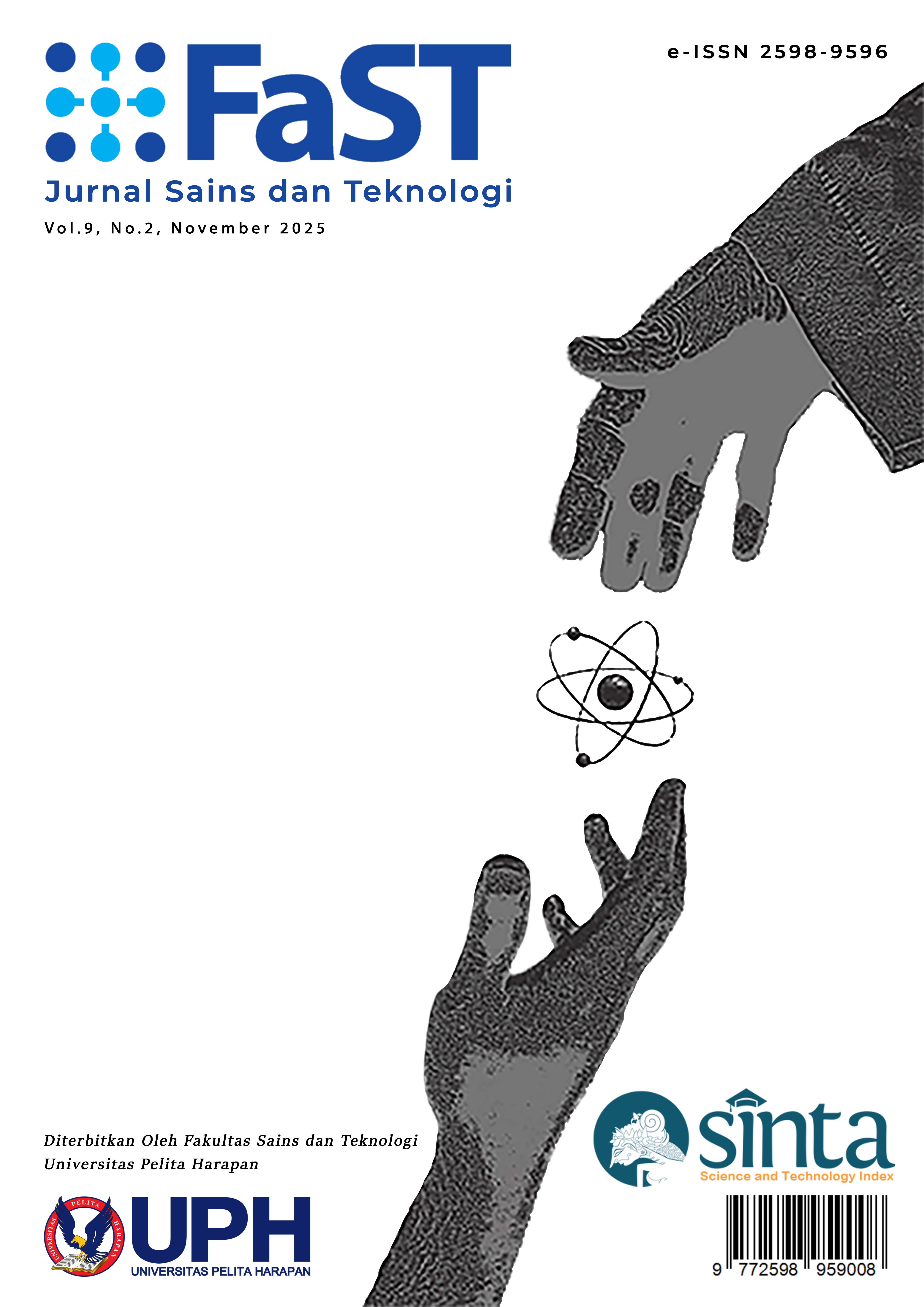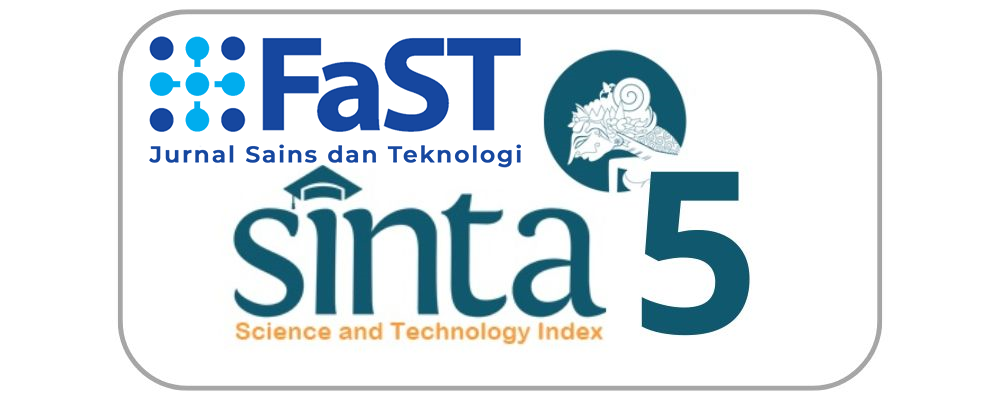Perancangan dan Implementasi Electronic TPM (E-TPM) Berbasis Website dengan QR Code pada Mesin Tire Final Inspection di PT XYZ
[Design and Implementation of a Website-Based Electronic TPM (E-TPM) with QR Codes on The Tire Final Inspection Machine at PT XYZ]
DOI:
https://doi.org/10.19166/jstfast.v9i2.10375Keywords:
Electronic TPM; Code Igniter; Paper based; PHP; SMART; Web BasedAbstract
In the Industrial Revolution 4.0, continuous innovation is crucial for companies striving to achieve their vision and mission. One key initiative is implementing Total Productive Maintenance (TPM). PT XYZ, however, encounters challenge due to its ongoing use of conventional, paper-based methods. These methods have numerous drawbacks, such as incomplete documentation of machine damage, outdated information caused by maintenance department oversights, extended data retrieval times, and the risk of document loss or damage. To overcome these issues, an innovative transition was made from a paper-dependent system to a digital, web-based platform to enhance TPM's effectiveness. Data was collected through direct field observation and processed using the SMART (Specific, Measurable, Achievable, Relevant, Timebound) methodology to accurately identify problems and solutions. A web-based application named E-TPM was developed, utilizing the PHP programming language, the CodeIgniter framework, a MySQL database, and a straightforward, user-friendly interface designed with Bootstrap 5.0. This digital shift offers substantial benefits, including real-time management of machinery damage data, improving TPM monitoring efficiency. Digital data storage reduces the risk of falsification or loss, as information is centrally located. Moreover, E-TPM implementation has led to a significant reduction in paper costs, approximately Rp. 495,000 per year, due to the elimination of paper-based TPM tags that are prone to damage or loss. Finally, access to precise data and in-depth analysis enables management to make better-informed decisions regarding maintenance strategies.
Bahasa Indonesia Abstract: Dalam era revolusi industri 4.0, inovasi menjadi kunci bagi perusahaan dalam mencapai visi dan misi mereka. Salah satu inovasi tersebut adalah penerapan Total Productive Maintenance (TPM). Namun, PT XYZ masih mengandalkan sistem konvensional berbasis kertas yang memiliki berbagai kelemahan seperti pencatatan kerusakan mesin yang tidak lengkap, risiko data usang karena pembaruan lambat, pencarian data yang membutuhkan waktu lama, serta risiko kehilangan atau kerusakan dokumen. Sebagai solusi, metode paper-based digantikan dengan sistem digital melalui pengembangan situs web untuk mengoptimalkan TPM. Data dikumpulkan melalui observasi lapangan dan dianalisis menggunakan metode SMART (Specific, Measurable, Achievable, Relevant, Timebound) untuk memastikan solusi yang efektif. Selanjutnya, aplikasi berbasis web yang dinamakan E-TPM dikembangkan menggunakan PHP, dengan framework CodeIgniter, database MySQL, dan desain antarmuka yang mudah digunakan dengan Bootstrap 5.0. Transformasi digital ini memungkinkan pengelolaan data kerusakan mesin secara real-time, meningkatkan efisiensi pengawasan kegiatan TPM. Penyimpanan data secara digital mengurangi risiko pemalsuan dan kehilangan data. Penerapan E-TPM juga berdampak positif pada penghematan biaya hingga Rp 495.000 per tahun dengan mengurangi penggunaan kertas untuk tag TPM. Dengan data yang akurat, manajemen dapat lebih efektif dalam merumuskan strategi pemeliharaan.
References
Abidah, I. N., Hamdani, M. A., & Amrozi,
Y. (2020). Implementasi Sistem Basis Data Cloud Computing pada Sektor Pendidikan. KELUWIH: Jurnal Sains Dan Teknologi, 1(2), 77–84. https://doi.org/10.24123/saintek.v1i2.2868
Adhiwibowo, W., Mahmud, G., & Artikel,
I. (2021). Sistem Perpustakaan Menggunakan QR Code Berbasis Web Dengan Framework Codeigniter. 2(1), 55–62.
http://dx.doi.org/10.26623/jisl
Agung Pratama, M., Kurniawan, A., Irwan,
A., Studi, P., & Mesin, T. (2020). ANALISIS PENERAPAN TOTAL PRODUCTIVE MAINTENANCE (TPM) MELALUI METODE OVERALL EQUIPMENT EFFECTIVENESS (OEE) PADA MESIN PACKER DI PABRIK SEMEN PT. XYZ. JITEKH, 8(1), 11–21.
DOI: 10.35447/jitekh.v8i1.305
Faticha, R., Aziza, A., & Hidayat, Y. T.
(2019). ANALISA USABILITY DESAIN USER INTERFACE PADA WEBSITE TOKOPEDIA MENGGUNAKAN METODE HEURISTICS EVALUATION. In Jurnal TEKNOKOMPAK (Vol. 13, Issue 1). https://doi.org/10.33365/jtk.v13i1.265
Harahap, U. N., Eddy, E., & Nasution, C.
(2021). Analisis peningkatan produktivitas kerja mesin dengan menggunakan metode Total Productive Maintenance (TPM) di PT. Casa Woodworking Industry. Jurna VORTEKS, 2(2), 110–114.
https://doi.org/10.54123/vorteks.v2i2.88
Kendall, Kenneth E. and Kendall, Julie E.
2014). Systems Analysis and Design, 9th edition, Pearson
Casro, Y. P. (2020). Rancang Bangun Aplikasi Pengaduan Pelanggan Berbasis Web Menggunakan Framework CodeigniterDi Indotechno Purwokerto. urnal Sains dan Informatikap-ISSN: 2460-173XVolume 6, Nomor 2, November 2020e-ISSN: 2598-5841, 9.
https://doi.org/10.34128/jsi.v6i2.244
Dimas Irwan Aji Andriyono1), A. F. (2020). Rancang Bangun Aplikasi Total Productive Maintenance (TPM). Jurnal Teknologi Informatika dan Komputer MH Thamrin p-ISSN 2656-9957; e-ISSN 2622-8475, 11.
https://doi.org/10.37012/jtik.v6i2.235
Erliyan Redy Susanto, F. R. (2017). RANCANG BANGUN APLIKASI BERBASIS WEB PERIZINAN PRAKTIK TENAGA KESEHATAN MENGGUNAKAN FRAMEWORK CODEIGNITER. Jurnal TEKNO KOMPAK, Vol. 11, No. 2, 2017, 55-60. ISSN 1412-9663 , 55-60.
https://doi.org/10.33365/jtk.v11i2.173
Regina Nurfitriyani Anissa, R. T. (2021). RANCANG BANGUN APLIKASI PENERIMAAN SISWA. JURNAL RESPONSIF, Vol. 3 No.1 Februari 2021, pp. 122~128, 7.
Downloads
Published
Issue
Section
License
Copyright (c) 2025 Rudy Vernando Sialahi, Rahardyan Rachman

This work is licensed under a Creative Commons Attribution-ShareAlike 4.0 International License.
“Authors who publish with this journal agree to the following terms:
1) Authors retain copyright and grant the journal right of first publication with the work simultaneously licensed under a Creative Commons Attribution License (CC-BY-SA 4.0) that allows others to share the work with an acknowledgement of the work's authorship and initial publication in this journal.
2) Authors are able to enter into separate, additional contractual arrangements for the non-exclusive distribution of the journal's published version of the work (e.g., post it to an institutional repository or publish it in a book), with an acknowledgement of its initial publication in this journal.
3) Authors are permitted and encouraged to post their work online (e.g., in institutional repositories or on their website). The final published PDF should be used and bibliographic details that credit the publication in this journal should be included.”



